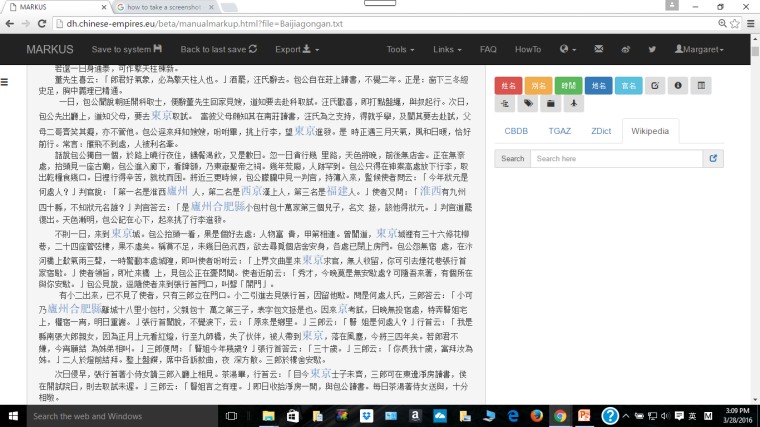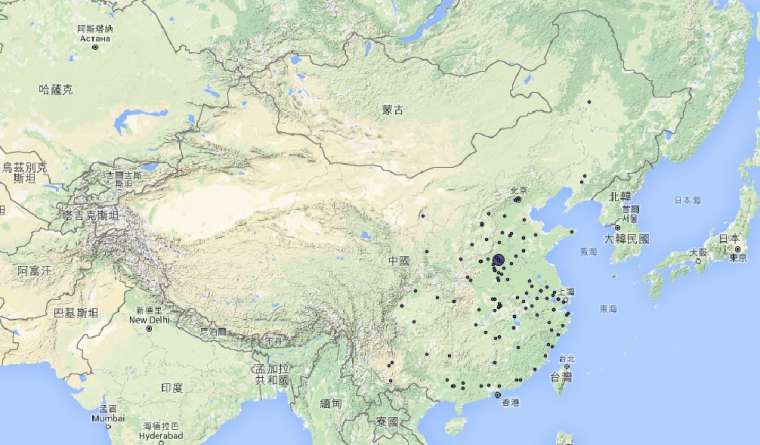MARKUS is the reason I am pursuing my current research project. Inspired by Franco Moretti’s work, I had an idea about mapping the Chinese novel, but it seemed that it would be incredibly difficult to do it on a large scale using traditional methods. Then I learned about MARKUS, and its ability to identify place names in a digitized Chinese text. I tried it on my material, and found that with some manual correction, MARKUS gives me a good overview of all the places mentioned in a particular novel (or collection of fiction, like Baijia gongan 百家公案, below).

From that point I can decide what to map (using QGIS) and how to interpret it.

Map of places in the court case collection Longtu gongan 龙图公案, ca. 1644.
This is a big change from the way literature scholars usually look at places in the novel. We generally think in terms of types of settings or Bakhtin’s chronotopes, but relatively little attention has been paid to where those settings fall on a map. We don’t usually consider how frequently a place is mentioned in a particular novel, but doing so can be revealing. I intend to continue using MARKUS to investigate the use of space in hundreds of traditional Chinese novels, in order to bring back the vast number of novels that are usually overlooked. Once we articulate meaningful frameworks in which to interpret the results, digital tools like MARKUS have the potential to change the scale at which we do research.
Margaret Wan, Associate Professor, University of Utah
Professor Wan is currently working on a publication on this work. Stay tuned for an update.